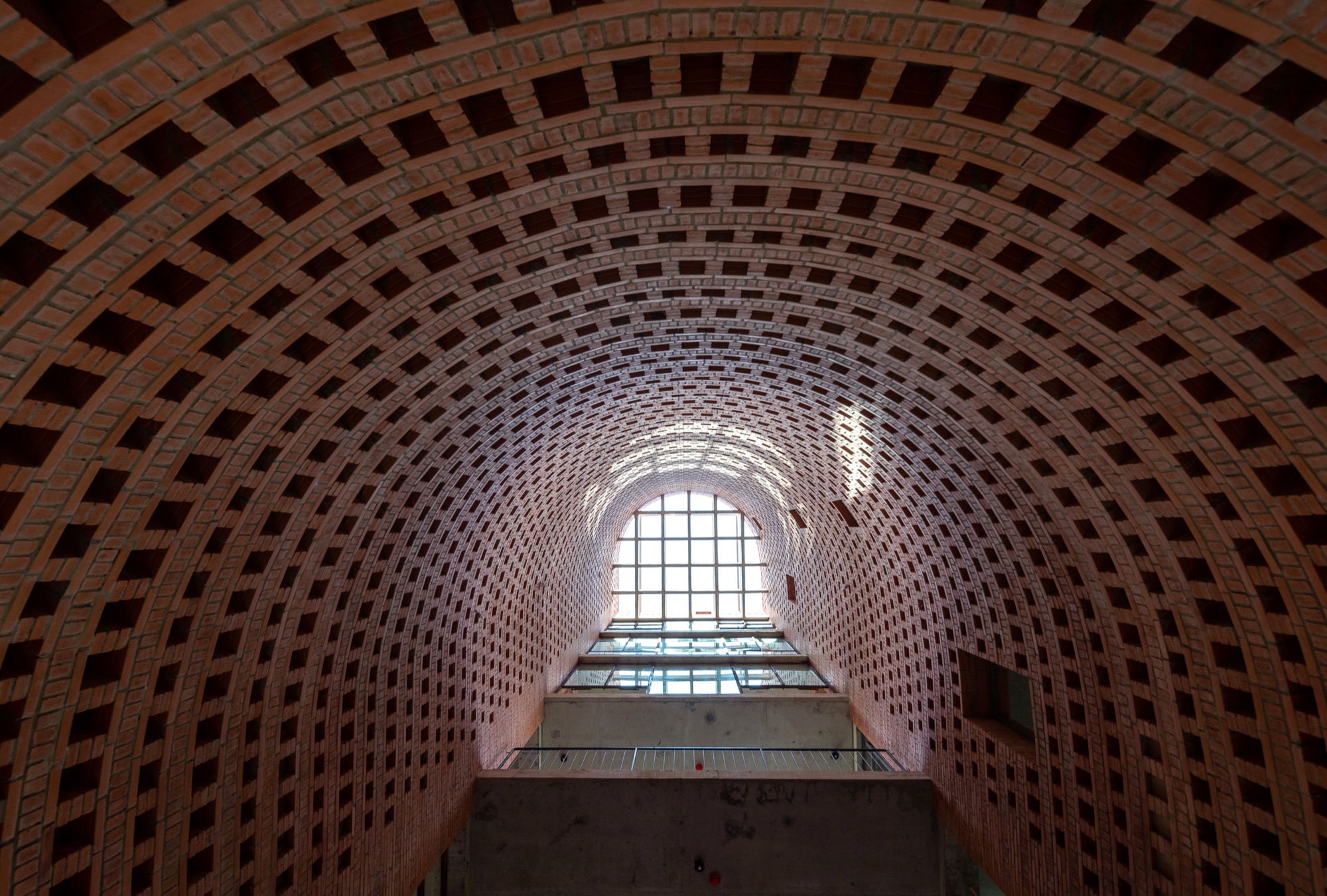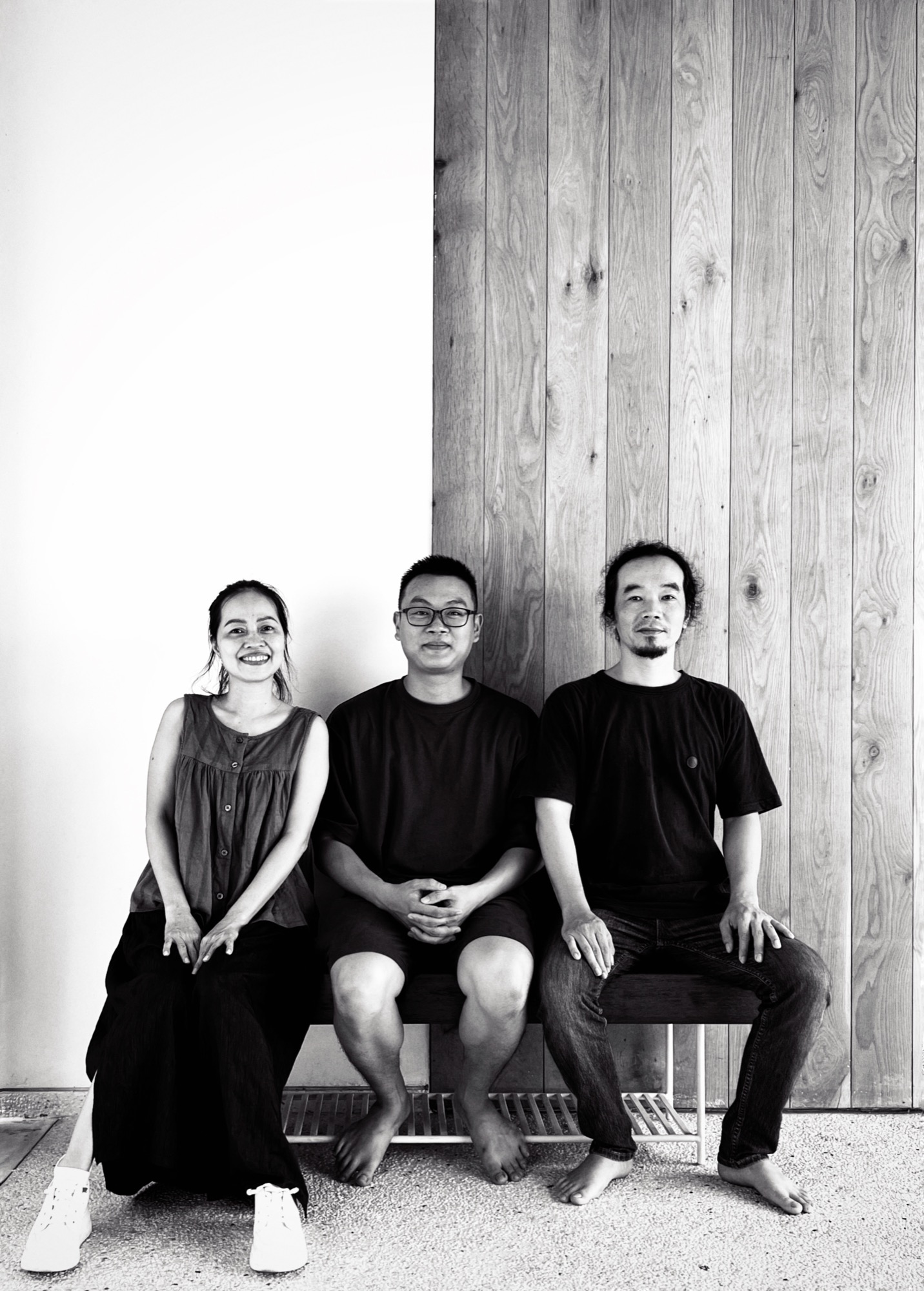
Text by Trần Trung Hiếu
Photos by Triệu Chiến
Brick building
The conversation happened during the period that Tropical Space was in the process of designing a manufactory next to a ceramic warehouse which was once the creative studio of artist Lê Đức Hạ. He, together with some other potters, are continuing and preserving the local craft of ceramic making. Each year, tempests destroy his warehouse bits by bits, the site loses its original beauty. According to architect Trần Thị Ngụ Ngôn, the solution is to enlarge the new section which includes the kiln, warehouse and gallery. The factual operation line will shape the ground area of the whole construction. If before, the pottery warehouse was only a work place for a single person, the up-coming production workshop will welcome visitors to experience the process of making handicrafts from clay.
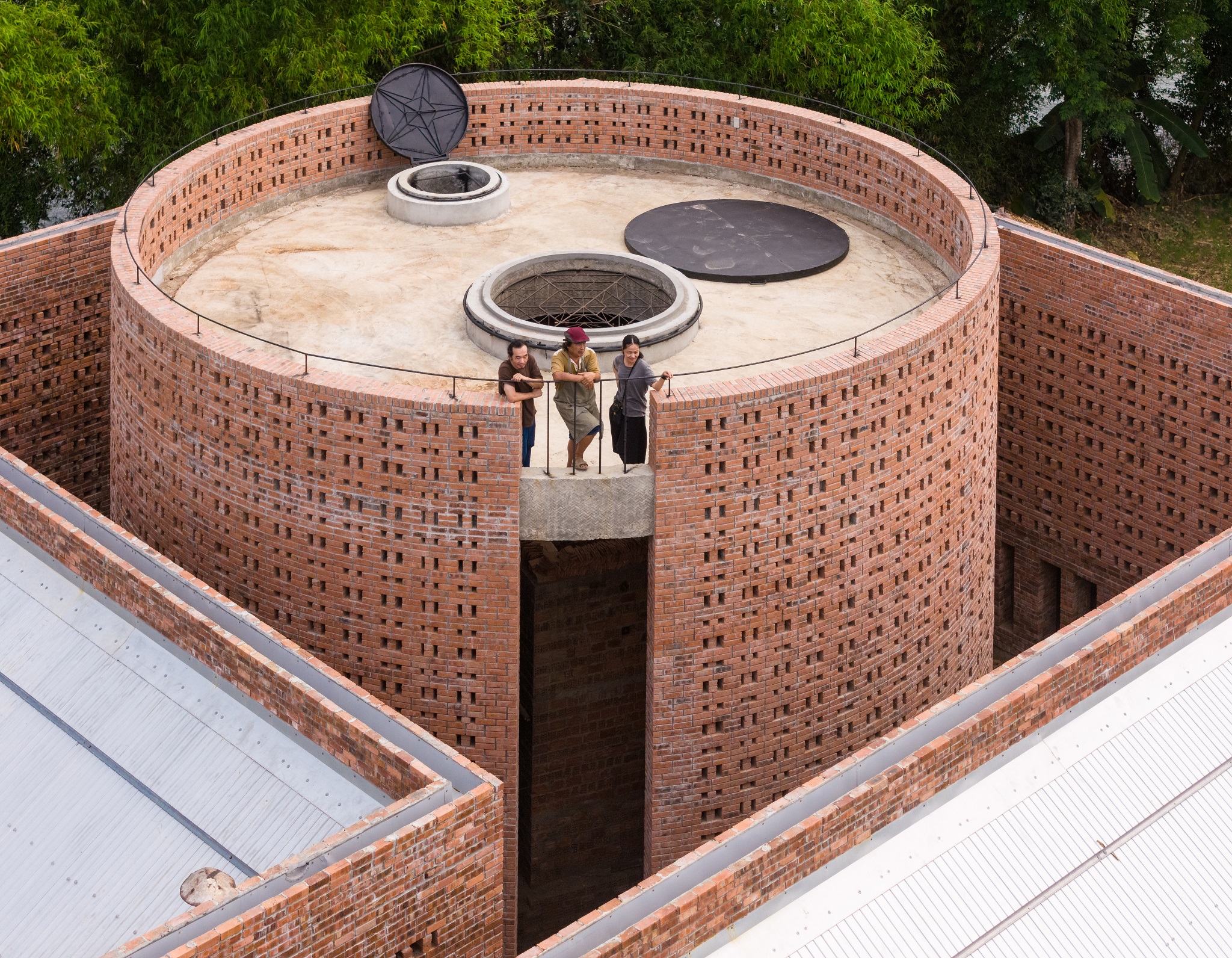
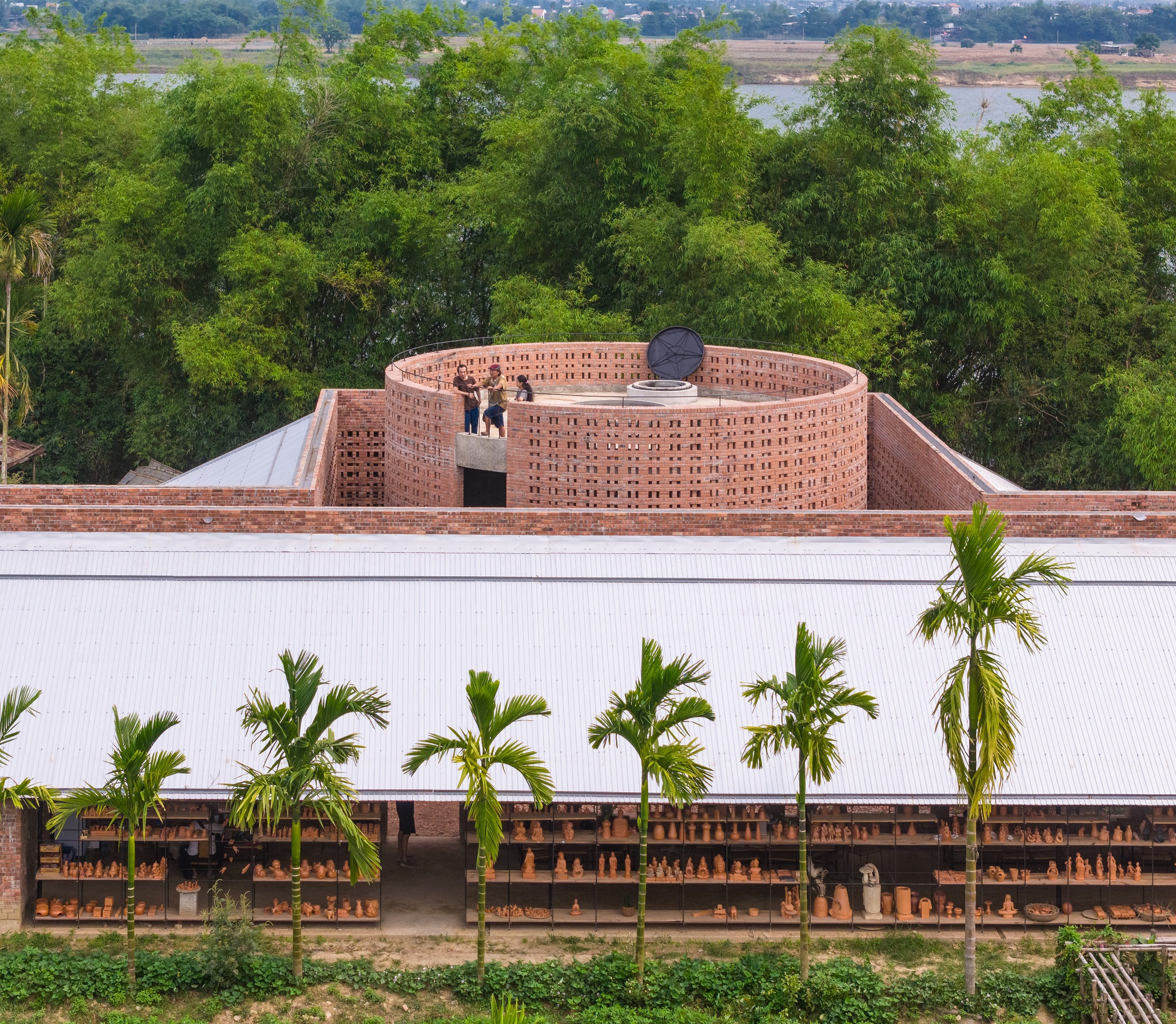
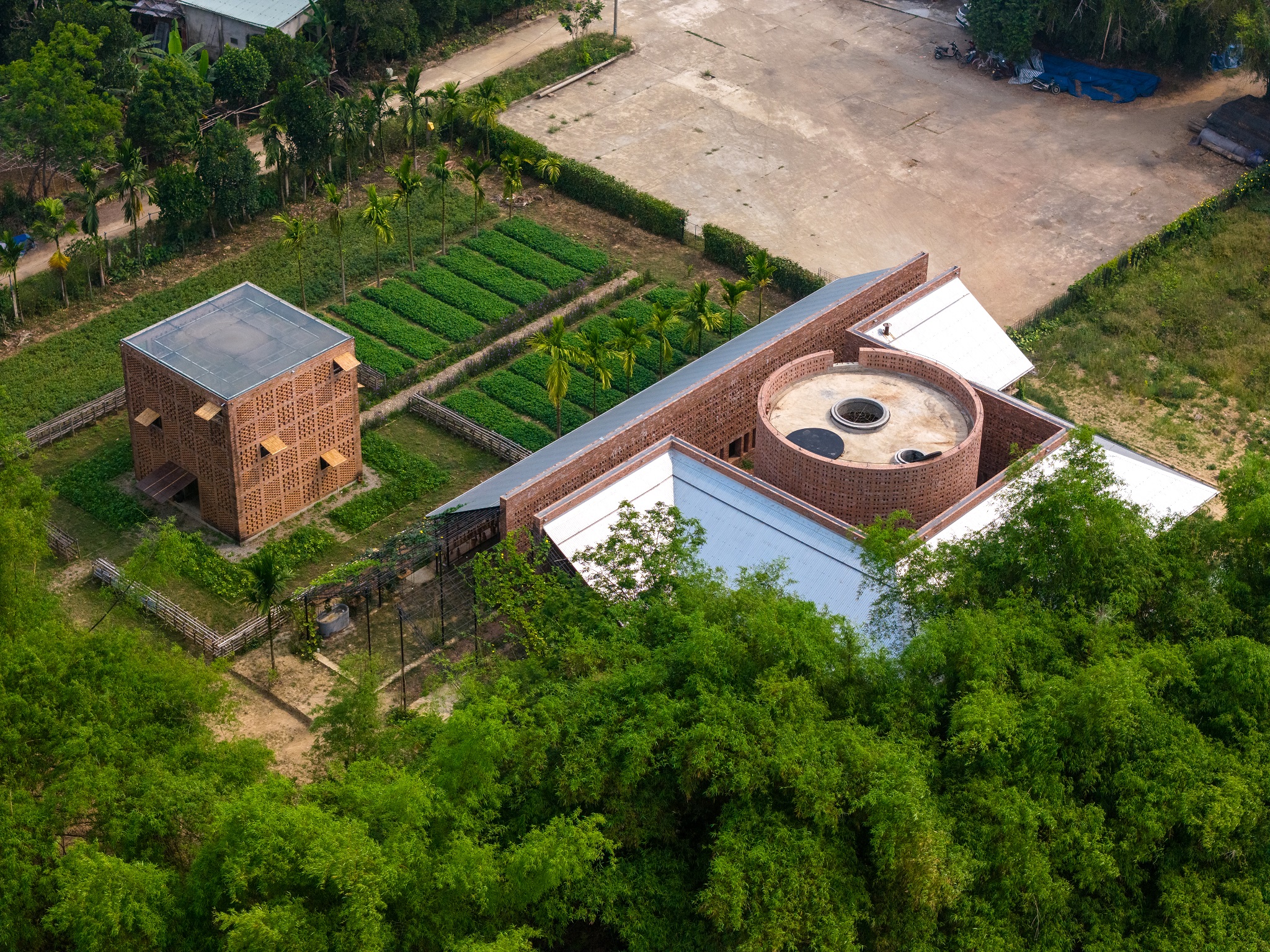
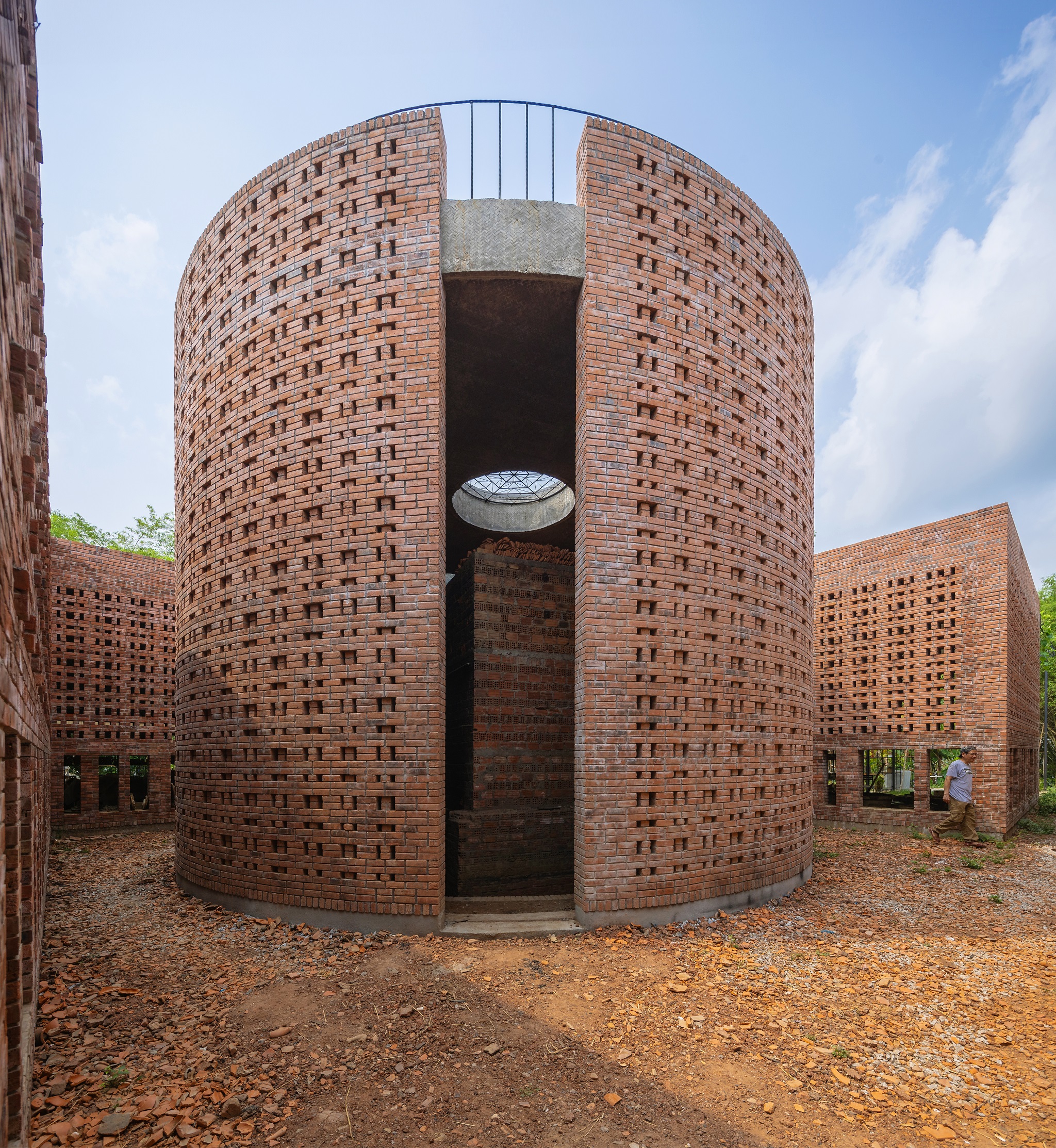
We find the repeating process in the workshop and religious rituals quite akin. Tropical Space wants visitors to have closer look on the work of each potter, whose repeated and clear and of course carrying their own interpretations.
Architect Trần Thị Ngụ Ngôn
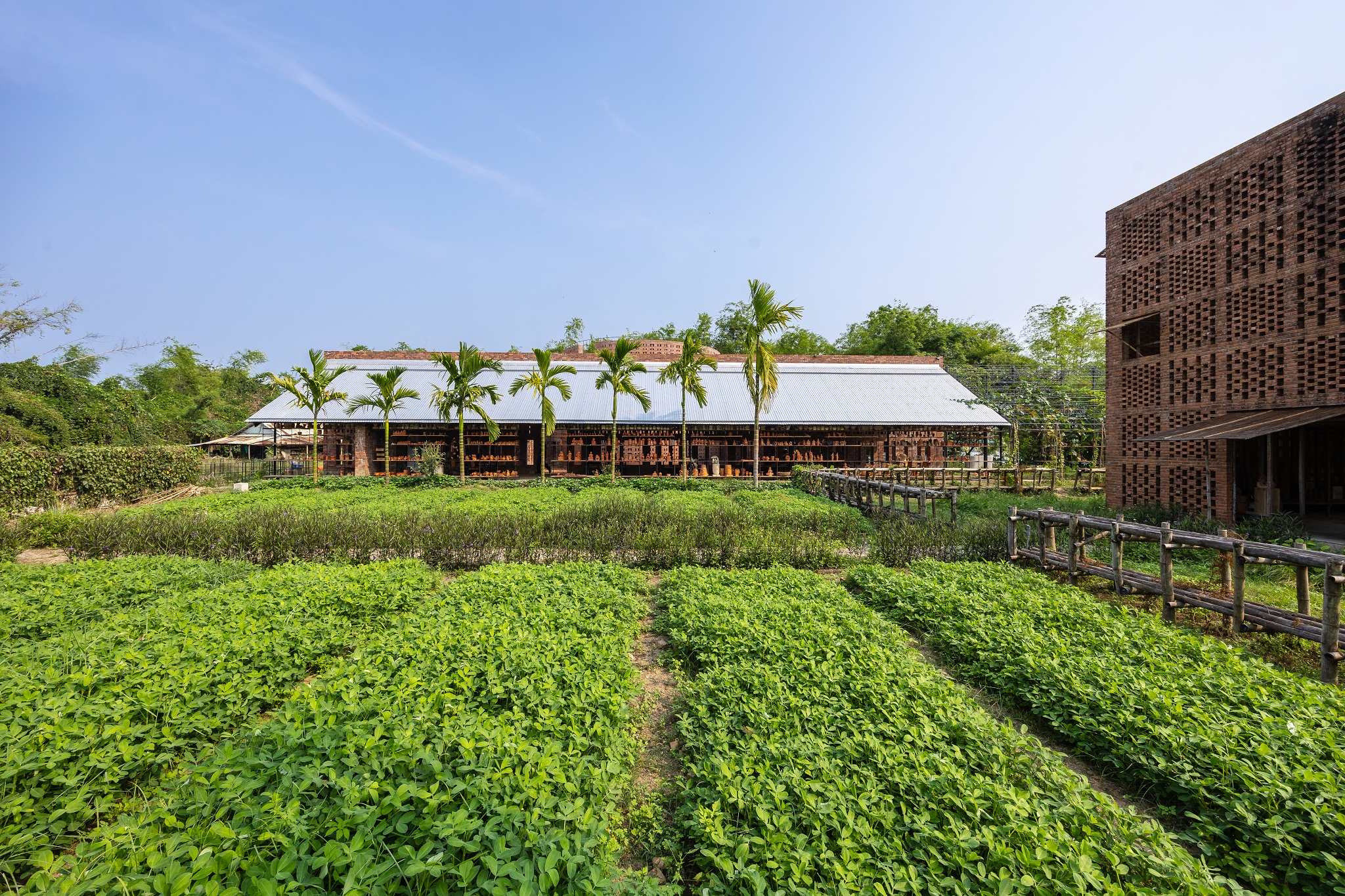
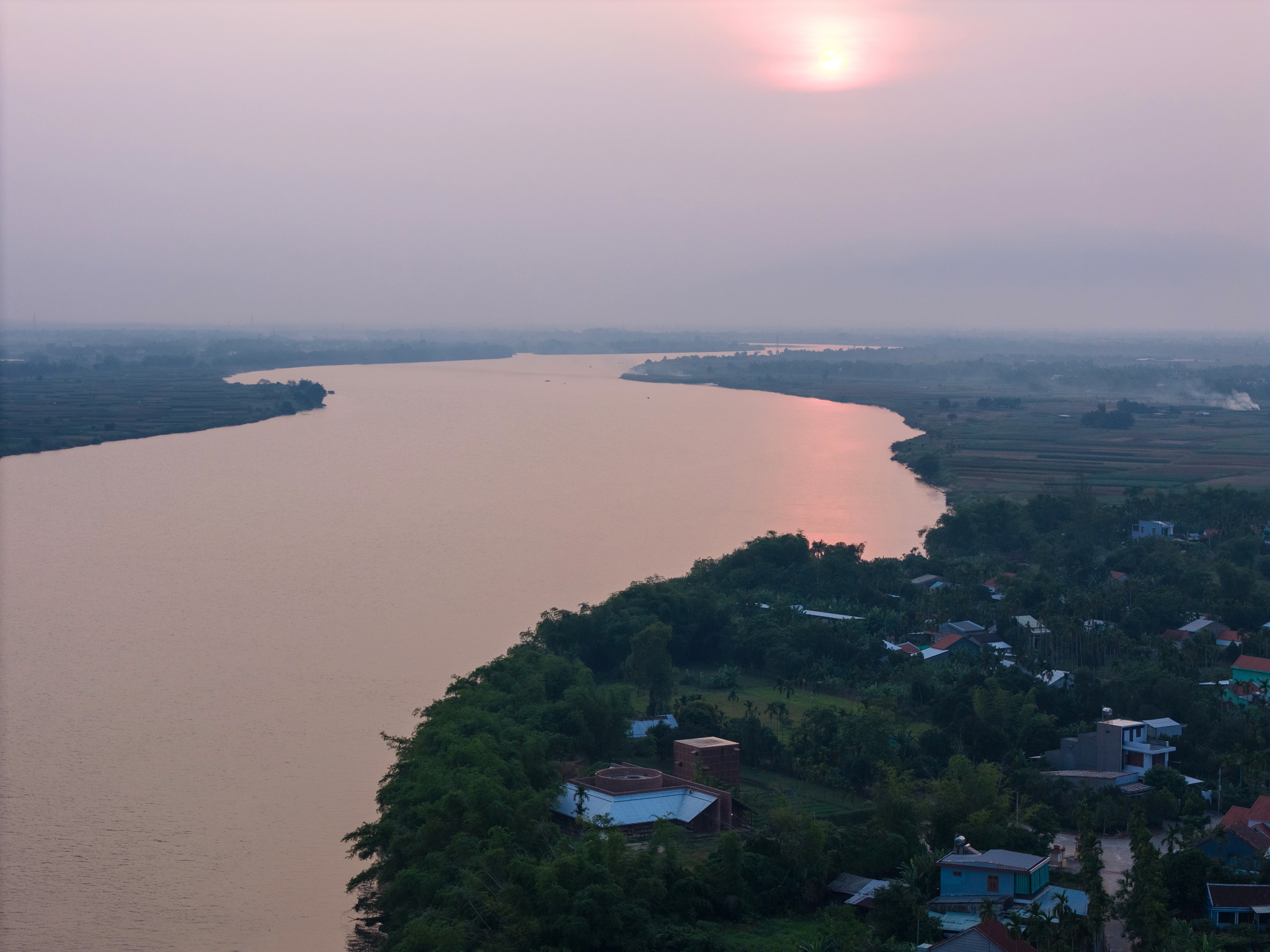
When architect Nguyễn Hải Long was asked about the most used brick in his designs, he considered this as a common sense regardless advanced technology and various kinds of material. In the past, Tropical Space took on housing projects with relatively modest investment, brick has been their optimal option to save their budget. Later, Tropical Space actively takes part in different categories in design to increase the experimental aspect for brick, simultaneously to witness and feel the colour as well as other variations of this material. In fact, four types of brick were used in the process of building Premium Office depending on the requirement of each area, medium or small size brick is used in curved space and this also a plus for the surface appearance thanks to the brick’s quality.
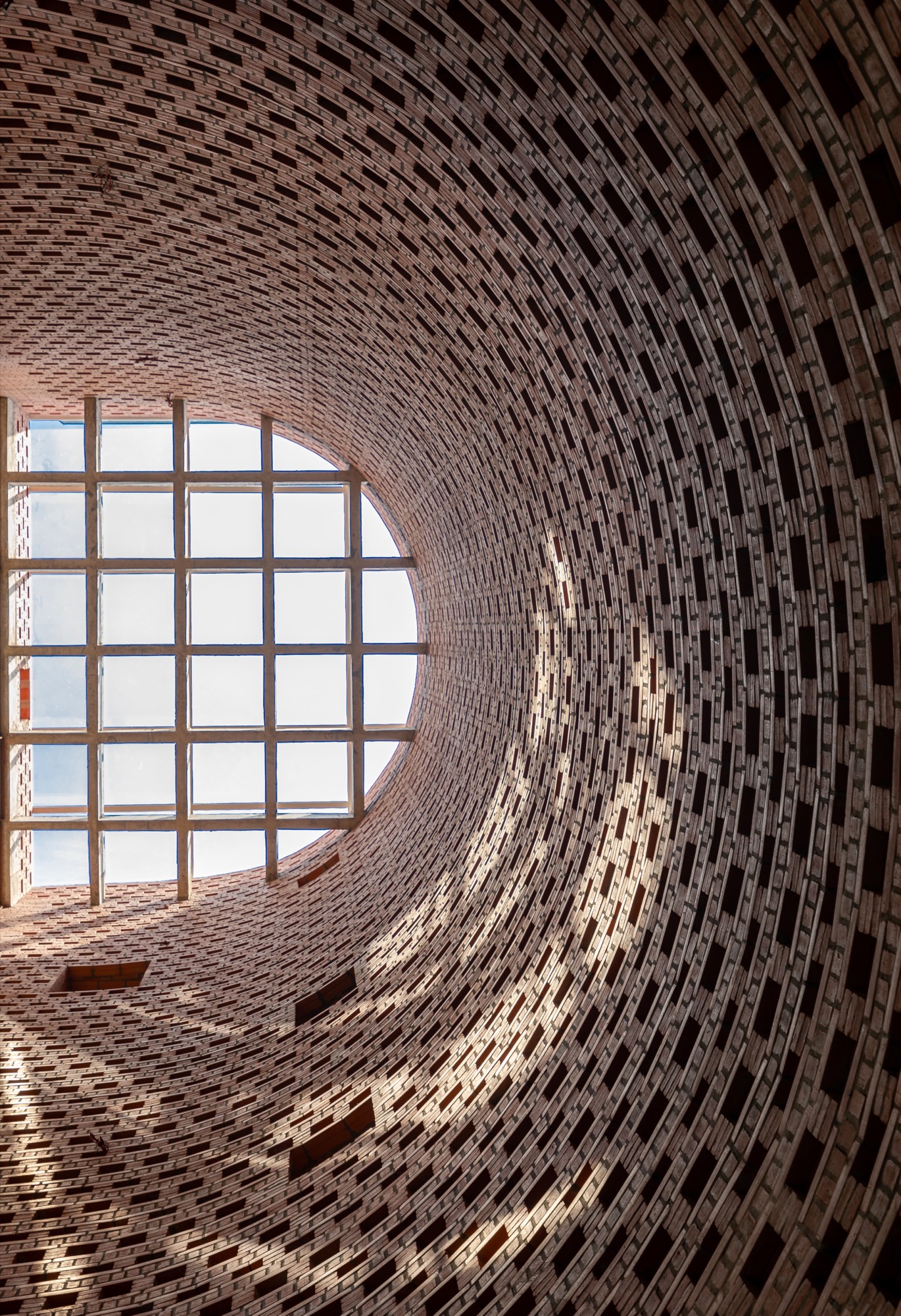
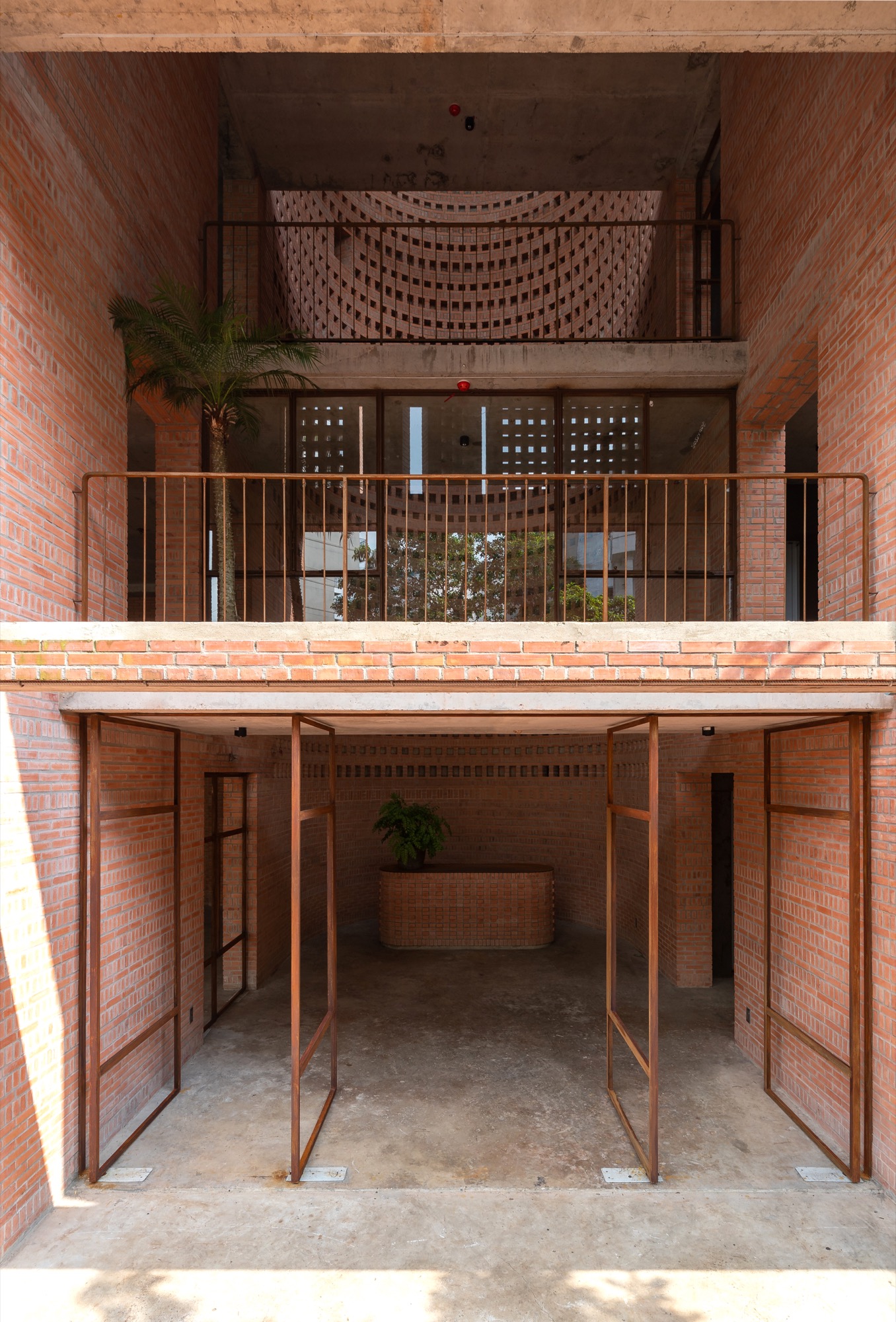
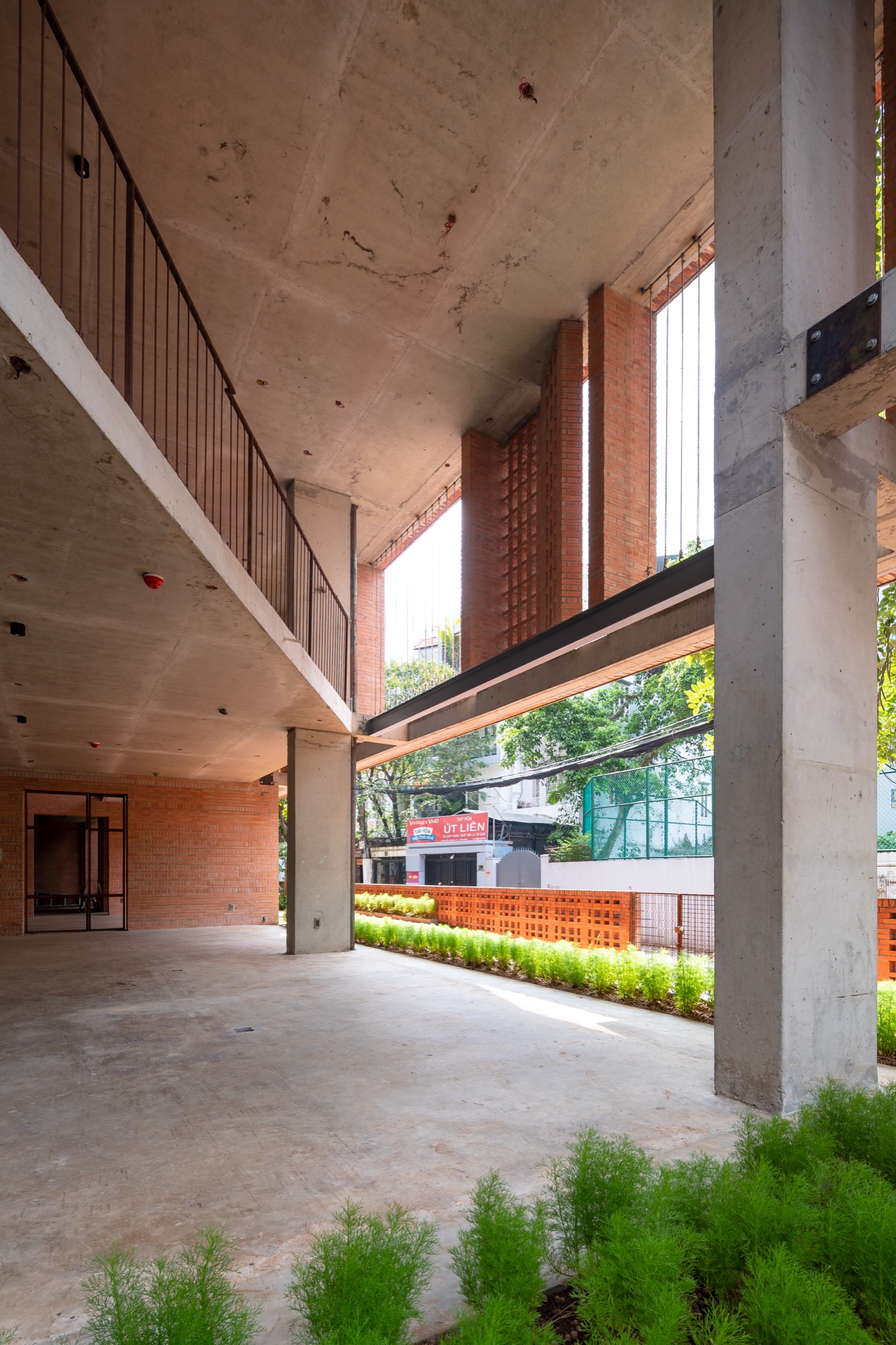
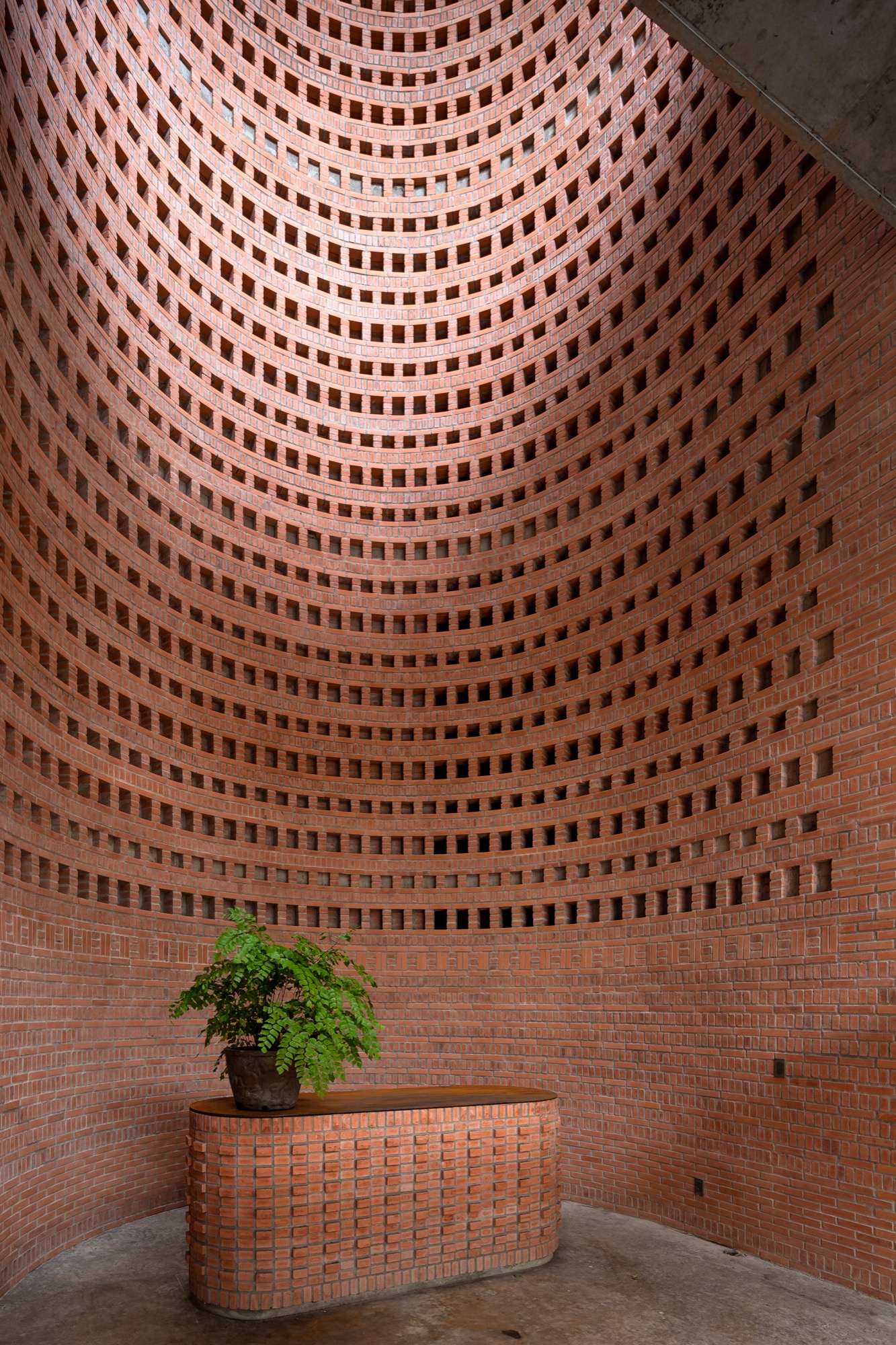
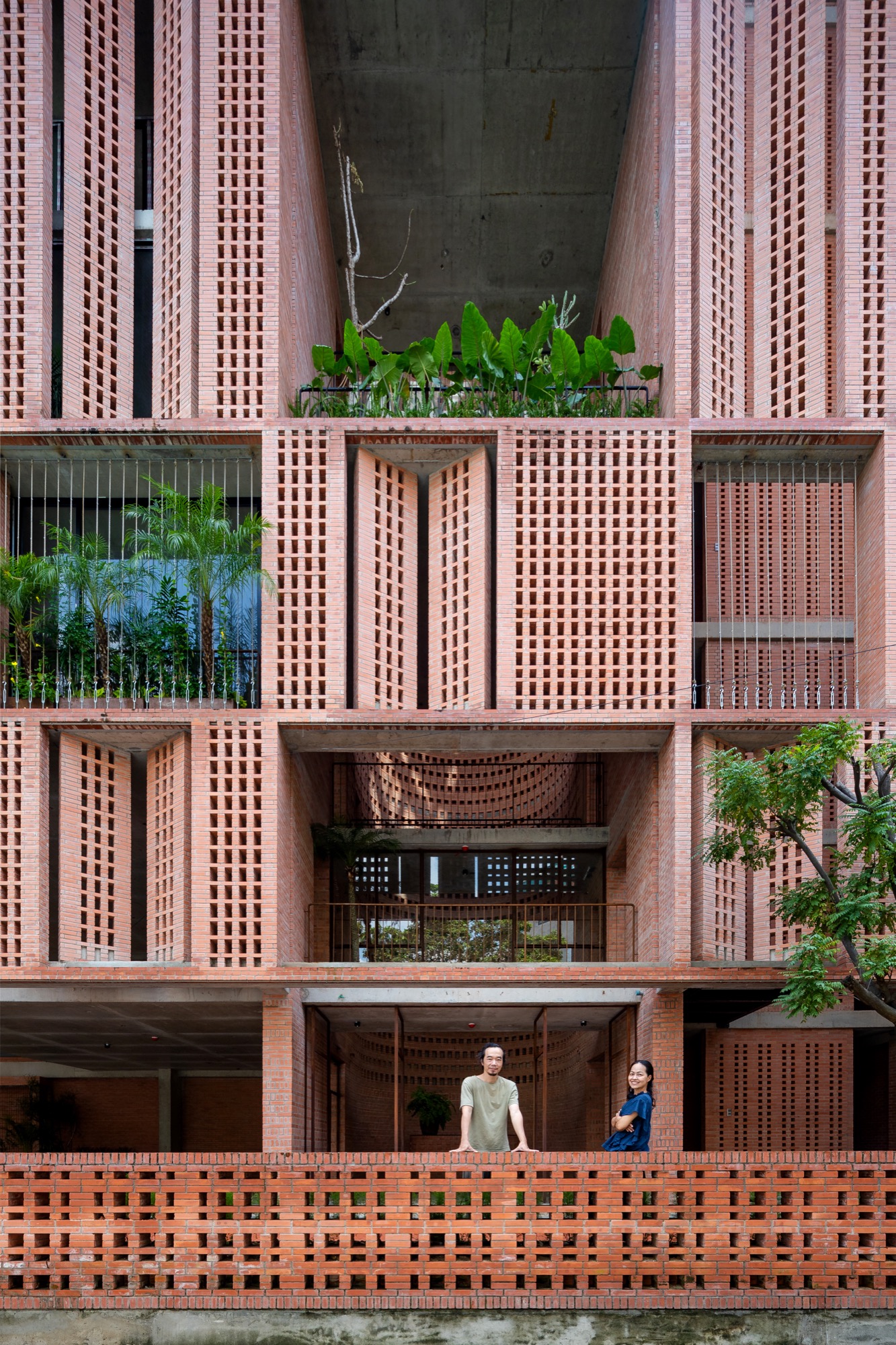
Sharing more about this, architect Long’s point of view is that the discovery of fire by caveman was a great step forward of mankind, then human beings learning how to use fire to bake earth into shaped objects evidently shows the civilised revolution in the material life of mankind. A baked clay has its own charm regardless what shape and what angle. Tropical Space just designs and modularises those rectangular baked clay blocks to form a work of architecture. This, is nothing new, has the value of inheritance; people in the past had done so many similar works using bricks, which are enormous and distinctively beautiful. Architect Long considers that architecture is something like a layer that connects human to environment, therefore, it is required to have a deep understanding knowledge about the internal space, the external environment and the importance of architecture in the interaction and empathy between human being and context, the two natural subjects.
Slowing down is indeed needed
Sharing the same points of view and opinions about Vietnamese traditional architecture, the two architects, Ngôn and Long, claim that Vietnam is a nation of ethnic diversity, generating a richness in architectural identity.
Depending on the geographical location, context and culture of each ethnic, the architectural form or human’s behaviour with architecture is distinguished. Each generation has their own way of dealing with the context, gradually it becomes folk experiences, the characteristic of each group of people is clearly displayed through their architecture. To architect Ngôn, the architecture of each ethnic should not be replicated, we ought to learn the long-standing spirit of Việt’s people the way we can live in harmony relying on nature instead.
To clarify this statement, architect Long also point out the differences in daily life activities of each ethnic. Êđê people, inhabit mostly in Vietnam’s central and central highland region, live in family in longhouses, there must be more than a dozen of members under each roof. Unlike Kinh or other ethnic group, Êđê people live gracefully together, perennially, it is rarely seen that married couple would move apart from the family. The privacy of individual in architecture is absolutely respected even if they are under the same roof, this is a thing to learn. From what mentioned above we could reflect on ourselves a question if we could live like that today? If we were to live together with many generations and families in the same house, what should we behave? To answer this question, architect Long believes that everyone of us has already slowed ourselves down to get more the role of each in architecture.
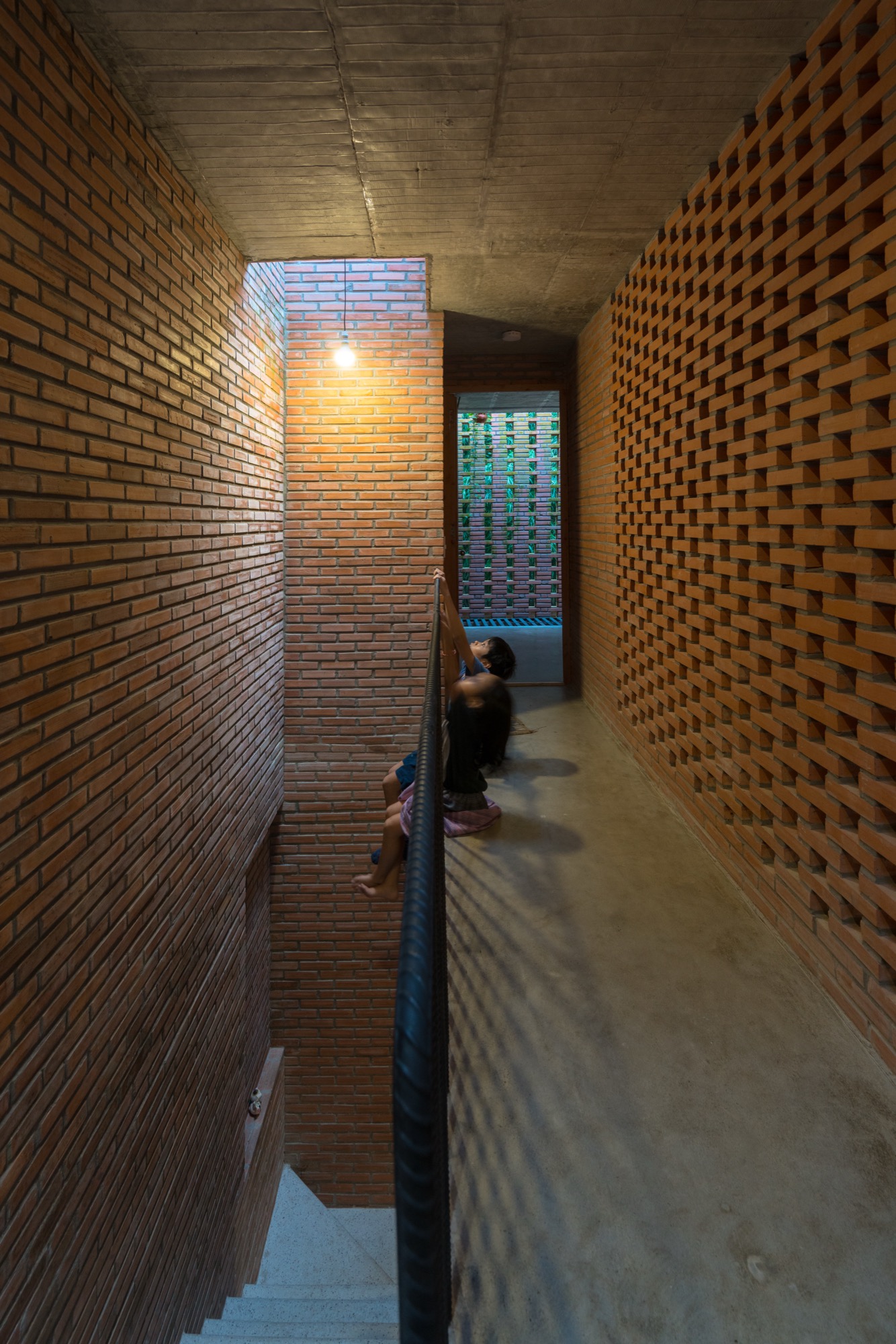
In another story, architect Long mentions communal values when witnessing some ethnical villages among the way from Kon Tum province to Quảng Ngãi province. When visiting a granary of a village, he saw the purpose of storing rice that if one house is unfortunately burnt down, that family would still be able to afford their meal. Gathering rice in the granary will cause them no fear or loss. The concern is how long will this practice fade? The answer lays in the word “enough”, which is a luxury concept in modern society.
People in the past had complete 365 days to experience life the tranquil way, they would pass on joyful and meaningful experiences to their offspring; this has gradually become colloquial knowledge. Thinking about the current architecture, architect Long opines that people had better take some times to feel than using the eyes to see and to know. What should be done when being at a construction site is to sit quietly amidst the space, to observe the transition of light, to contemplate every waft of wind, to touch the surfaces of physical materials to sense everything.
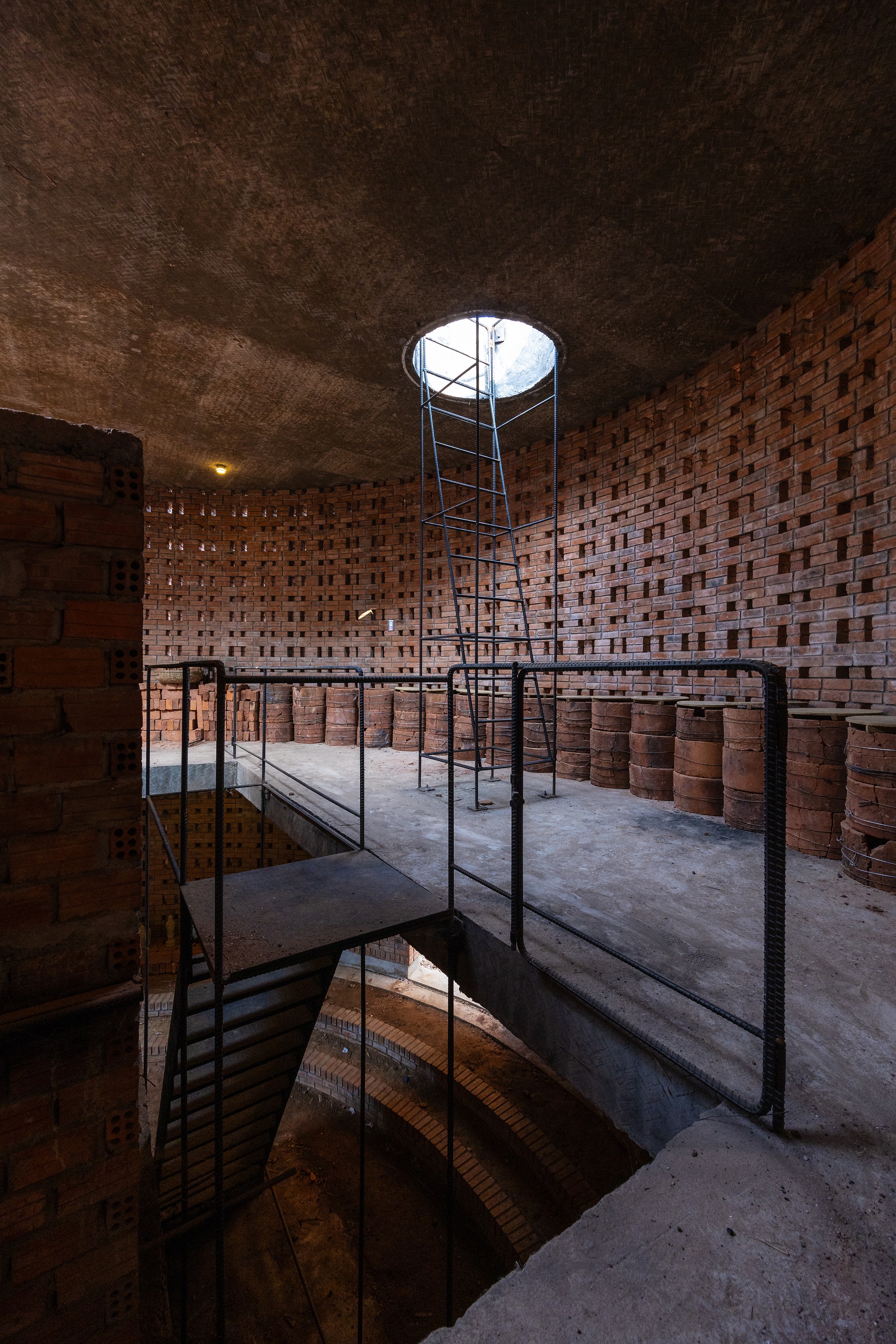
I like the contact of my whole body with the air volume in the space I created. When designing, I often condense myself in that volume, then sense all my interaction with the construction and with its external space. Placing the project in a certain context, I always have to balance out architecture and surrounding elements. There will be some connections that cannot be seen by eyes but intuition.
Architect Nguyễn Hải Long
We have much less clear sensation about the materials because of today’s advanced technology. According to architect Ngôn, many architectural offices in the world have been changing their thinking and practices. They started to pay more attention to the sentiment of their constructions, in which brick is a material offering unlimited creativity. People take pleasure in feeling the weight, the humidity and the reaction of materials with lights, markedly when each brick is made by human-hands in place of machine. This leads to a series of experiences from the creation of a material, that material fabricates the space and architects count on the material to design the context. This is a way to slow down the pace in the process of today rapid development.
